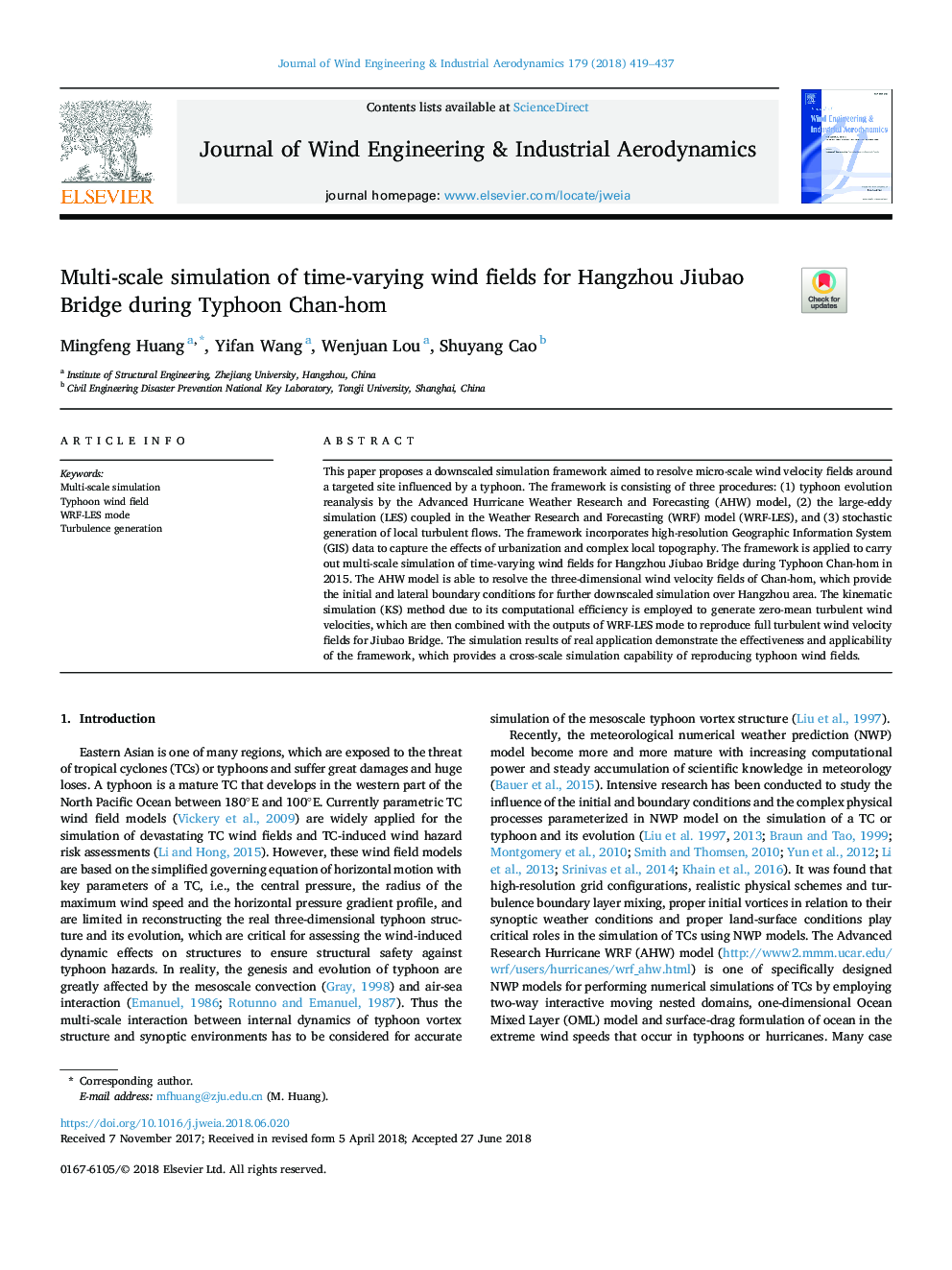| Article ID | Journal | Published Year | Pages | File Type |
|---|---|---|---|---|
| 6756836 | Journal of Wind Engineering and Industrial Aerodynamics | 2018 | 19 Pages |
Abstract
This paper proposes a downscaled simulation framework aimed to resolve micro-scale wind velocity fields around a targeted site influenced by a typhoon. The framework is consisting of three procedures: (1) typhoon evolution reanalysis by the Advanced Hurricane Weather Research and Forecasting (AHW) model, (2) the large-eddy simulation (LES) coupled in the Weather Research and Forecasting (WRF) model (WRF-LES), and (3) stochastic generation of local turbulent flows. The framework incorporates high-resolution Geographic Information System (GIS) data to capture the effects of urbanization and complex local topography. The framework is applied to carry out multi-scale simulation of time-varying wind fields for Hangzhou Jiubao Bridge during Typhoon Chan-hom in 2015. The AHW model is able to resolve the three-dimensional wind velocity fields of Chan-hom, which provide the initial and lateral boundary conditions for further downscaled simulation over Hangzhou area. The kinematic simulation (KS) method due to its computational efficiency is employed to generate zero-mean turbulent wind velocities, which are then combined with the outputs of WRF-LES mode to reproduce full turbulent wind velocity fields for Jiubao Bridge. The simulation results of real application demonstrate the effectiveness and applicability of the framework, which provides a cross-scale simulation capability of reproducing typhoon wind fields.
Related Topics
Physical Sciences and Engineering
Energy
Renewable Energy, Sustainability and the Environment
Authors
Mingfeng Huang, Yifan Wang, Wenjuan Lou, Shuyang Cao,
